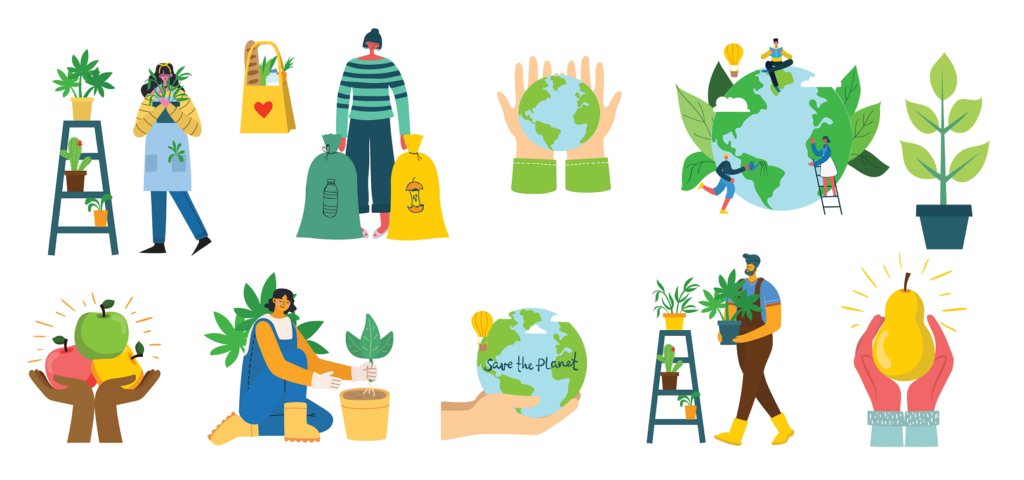
OCTOBER 28, 2021: European Day Against Food Waste
What we do at Fumagalli Danilo
As POMnature, our e-commerce service for individuals, we enthusiastically joined the project ToGoodToGo, the app that originated in Denmark and spread throughout Europe, which boasts 5 million users and was the first to network all food or catering establishments that can offer expiring food (fresh, very fresh or packaged) at a greatly reduced price. Every day, at the platform of Fumagalli Danilo Srl in Via Ferrante Brioschi, 39 in Vergo Zoccorino (MB), you can pick up our Magic Box ToGoodToGo, a service extraordinarily appreciated by private customers who in 1 year collected more than 2,500 boxes, actively contributing to the fight against waste.
Our 6,000-square-meter refrigerated platform is under constant monitoring, just as the cold chain is ensured from the base to our customers’ address. No food waste can therefore occur during storage and delivery.
Finally, the inevitable waste that we produce at the cutting stage for products in the
IV range
, one of our plus services, is of excellent quality. We then allocate it for pet food, relying on companies that specialize in pet food production and marketing.
Why we do it. Let’s look at the data released by the FAO
Each year about 14 percent of the food produced is wasted along the path from harvest to sale, and once purchased, an additional 22 percent is lost in retail sales, 17 percent in the home, and 5 percent in the food service area. Our fruit and vegetable sector closely reflects this picture offered by the Food wastage foodprint, Impacts on natual resources. the 2021 report prepared and released by the FAO that measures for the first time, in addition to the economic value of waste produced ($750 billion annually for 1.3 billion tons of food), what impact such waste has on the environment, i.e., climate, water resources, biodiversity, etc.
The good news is that a new awareness, both on a personal and corporate level, is emerging for everyone to do their part, both for obvious moral reasons (the paradox is that still 870 million people in the world do not get enough to eat) and for economic reasons, because waste does not benefit anyone. It is not for nothing that the most virtuous figure, among those mentioned above, is the one referring to the catering sector: since it is a budget and sustainability item for the enterprise, there is the utmost care in keeping it under control. Let’s learn from them!
Further good news to serve as an incentive to do better comes from Italy, which wasted 11.78 percent less in 2020 than the previous year.
How can we do to further reduce waste?
The above-mentioned FAO report, consistent with the UN 2030 agenda that sets out to halve waste by 9 years from now, gives guidance on how to effectively reduce food waste, here is a brief vademecum:
For farms: the greatest loss occurs at the storage stage, if facilities are not adequate such as space and refrigeration, but also if there is a lack of expertise to manage the balance between supply and demand more wisely. It is clear that in agriculture we cannot produce “on demand,” as many sectors, including industrial ones, are beginning to do, but we can take better care of sales forecasts so that excessive natural resources are not wasted on growing products that will remain unsold. Thoughtful farmers are creating virtuous circles of great impact, such as recycling food waste to produce biogas in specific plants.In fact, uncontrolled disposal of food produces methane, one of the most environmentally damaging gases.
For processing and distribution enterprises: the best choice one can make when faced with unsold food is to put it back into circulation for the benefit of people who cannot buy it, creating ongoing alliances with recognized associations so that the help received is plannable for them and not sporadic (or even surplus at certain times of the year, such as the Christmas holidays). If the status of unsold food is not feasible for people, also due to issues of shelflife, logistics, cold chain, it can be destined for animal consumption.
For consumers: don’t fill pantry and refrigerator impulsively, but do your shopping by planning your choices, not discarding fruit and vegetable products with defects that are purely cosmetic. Recycle “refrigerator bottoms” by relying on one’s own creativity or the many anti-waste recipes found online, relying on common sense when faced with an expiration date (also subjectively assess the state of the product).
Tasty anti-waste recipes
On the web you can find many recipes developed by the greatest Italian chefs, from Cracco to Sadler, from Bowerman to Oldani, but we would like to point out the forerunner of this research, Lisa Casali, who many years ago developed a way of thinking about and making eco-sustainable food, you can find her here.
Curiosities in the field
A virtuous anti-waste example in agriculture? We learned about what’s behind SPIREAT, the zero-waste organic Italian spirulina that takes the energy to heat the water in the growing tanks from the farmer’s biogas plant that houses greenhouses on his land. Magnificent alliance, for now in the Cremasque soon to be in Sicily.
Do you know BEAUTIFUL INSIDE? It is the award-winning idea of a couple who one day decided to counter the huge waste of fruits and vegetables that farmers are unable to sell for aesthetic reasons by first making information then creating outlets in Milan and a small production line of processed products (juices, chips, etc.).
